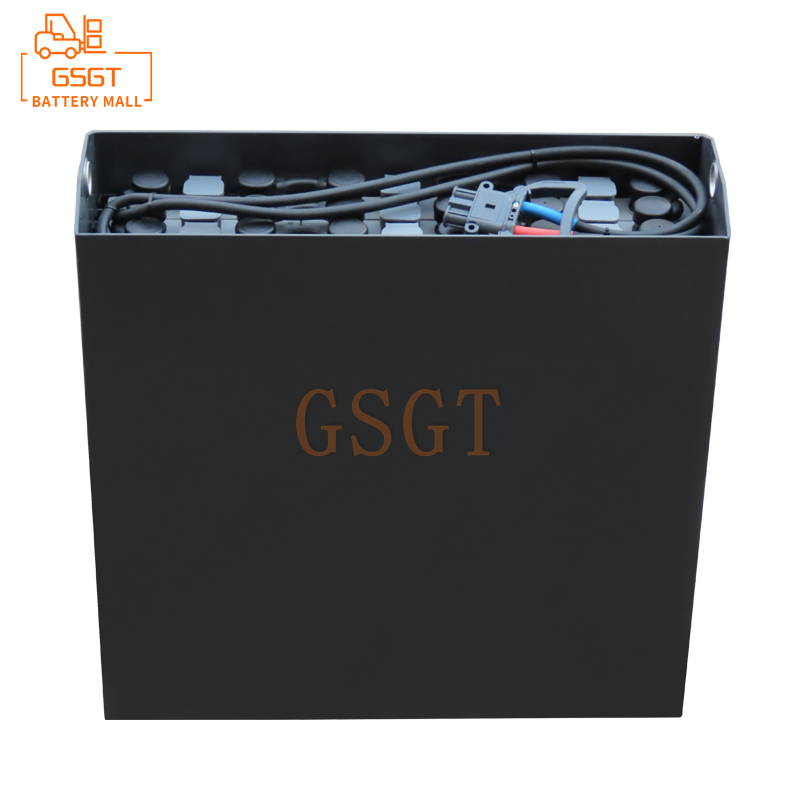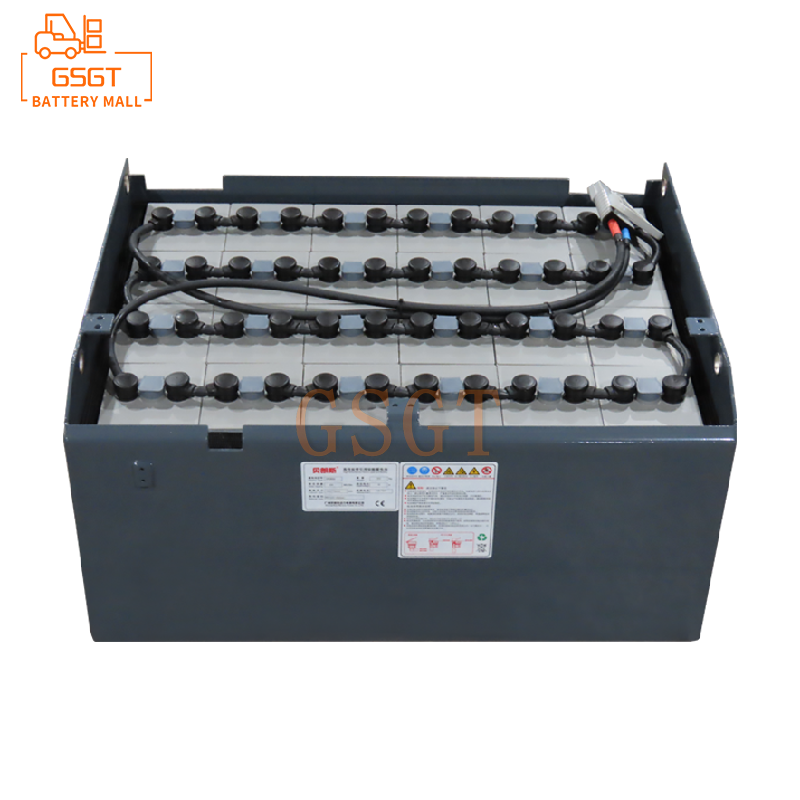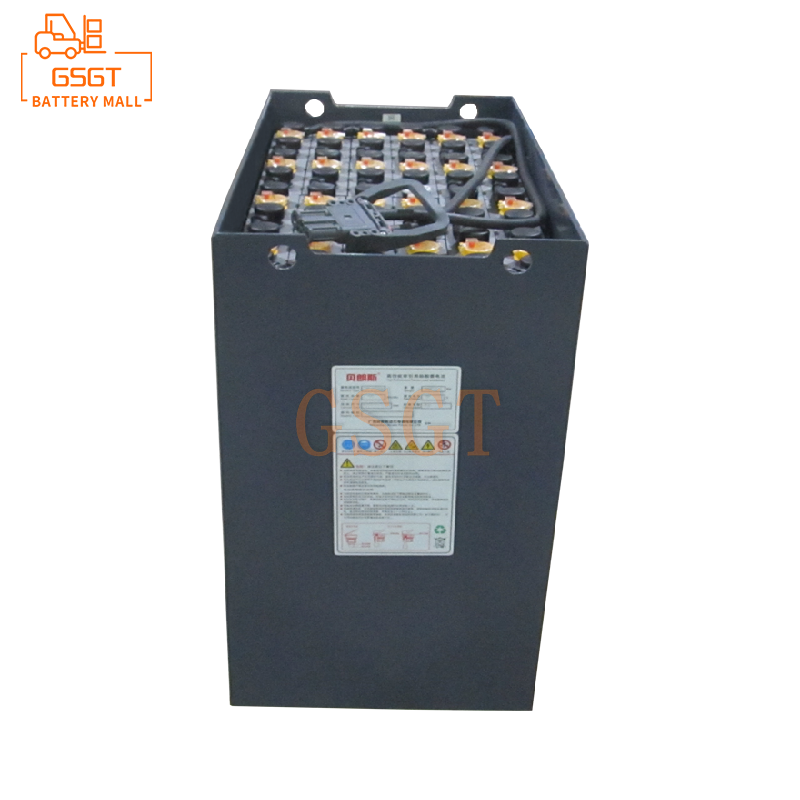Time:2025-08-01 09:24:46
Browse:618
1. Factors Affecting the Charging Time of Lead-Acid Batteries in Forklifts
(1) Battery capacity
Battery capacity refers to the ability of a battery to store and provide energy, usually measured in ampere-hours (Ah). The capacity of the lead-acid battery in a forklift directly affects the charging time. Generally speaking, the larger the capacity, the longer the charging time required. For instance, compared with the 48V/200Ah lead-acid battery, the charging time of the common 48V/500Ah lead-acid battery is significantly longer. This is because large-capacity batteries require more power to fully charge, and the amount of power a charger can provide within a unit of time is limited.
(2) Charging current
The charging current is an important factor determining the charging speed. At the rated charging current, the charging speed is relatively stable. However, if the output current of the charger used is too large, although the charging time may be shortened, it will cause significant damage to the battery, accelerating the sulfation of the battery plates and reducing the battery's lifespan. Conversely, if the charging current is too small, the charging time will be significantly prolonged. Generally, the chargers for lead-acid batteries in forklifts have corresponding charging current Settings, such as the common 10A - 30A and other different specifications and capacities of batteries, which are suitable for different charging currents.
(3) Remaining battery power
During the operation of a forklift, the remaining power of the battery will constantly change. If the battery has a large amount of remaining power, the time required to fully charge it will be relatively shorter. Conversely, if the battery is in a deeply discharged state, the charging time will increase significantly. For instance, there will be a significant difference in charging time when the battery starts charging when it has 50% remaining power compared to when it starts charging when it has only 10% remaining power.
(4) Ambient temperature
The ambient temperature has a significant impact on the charging performance of lead-acid batteries. Within an appropriate temperature range (generally 15℃ - 30℃), the chemical reactions of the battery are relatively smooth, the charging efficiency is high, and the charging time is relatively stable. However, when the temperature is too low, the viscosity of the electrolyte inside the battery increases, the ion diffusion speed slows down, resulting in a decrease in the charging acceptance capacity and an extension of the charging time. When the temperature is too high, the self-discharge rate of the battery accelerates, which may also cause problems such as overheating and even swelling of the battery, and at the same time affect the charging time. For instance, in the cold winter outdoors and the hot summer in the workshop, the charging time of the same forklift's lead-acid battery will vary.
2. Calculation Method for Charging Time of Lead-Acid Batteries in Forklifts
At the rated charging current, theoretically speaking, if the lead-acid battery of A forklift is charged from 0% to 100%, the charging time (hours) = battery capacity (Ah) ÷ charging current (A). For instance, for a lead-acid battery with a capacity of 300Ah, when charged with a 30A charger, the theoretical charging time is 300÷30 = 10 hours.
However, in practical use, to extend battery life, it is generally not recommended to completely drain the battery before recharging. Usually, it is suggested that the discharge should not exceed 80% of the battery capacity. That is to say, when the battery power is about 20% left, it should be charged. At this point, the charging duration (hours) = (battery capacity (Ah) ×80%) ÷ charging current (A). Still taking the aforementioned 300Ah battery and 30A charger as examples, the actual charging time is (300×80%) ÷30 = 8 hours.
3. Common Questions and Answers Regarding the Charging Time of Lead-Acid Batteries for Forklifts
(1) Can lead-acid batteries in forklifts be overcharged?
No. Overcharging can cause overpolarization reactions inside the battery, leading to gas evolution, drying up of the electrolyte, accelerating the aging and damage of the battery plates, and thus significantly shortening the battery's service life. For instance, when the charger malfunctions and fails to automatically cut off power after the battery is fully charged, continuing to charge for a long time will result in overcharging. Therefore, during the charging process, it is necessary to closely monitor the status of the charger and the condition of the battery to avoid overcharging.
(2) What impact will insufficient charging time have on the lead-acid battery of the forklift?
If the charging time is insufficient, the battery cannot be fully charged. During the operation of the forklift, problems such as insufficient power and shortened driving range will occur, affecting work efficiency. Insufficient charging time for a long time will also prevent the active substances on the battery plates from being fully restored, resulting in a gradual decrease in battery capacity and a reduction in battery life.
(3) Are the calculation methods for the charging time of lead-acid batteries of different brands of forklifts the same?
Although lead-acid batteries for forklifts of different brands may vary in specific performance parameters, the basic principle of calculating the charging time is the same. It is a comprehensive calculation based on factors such as battery capacity, charging current, remaining battery power, and ambient temperature. However, batteries of different brands may vary in terms of capacity and the appropriate range of charging current. Therefore, when actually calculating the charging time, it is still necessary to refer to the product manual of the brand's battery to ensure the accuracy and safety of charging.
4. Summary
The correct calculation of the charging time for forklift lead-acid batteries requires a comprehensive consideration of multiple factors such as battery capacity, charging current, remaining battery power and ambient temperature. By reasonably calculating the charging duration and avoiding overcharging and insufficient charging time, the service life of the battery can be effectively prolonged, the working efficiency of the forklift can be improved, and the usage cost can be reduced. In actual operation, it is essential to charge strictly in accordance with the instructions for battery and charger usage to ensure that the lead-acid battery of the forklift is always in good working condition.

$1690

$1200

$2610

$2450

MESSAGE
Professional And Efficient
Security
Affordable Price
Professional Services